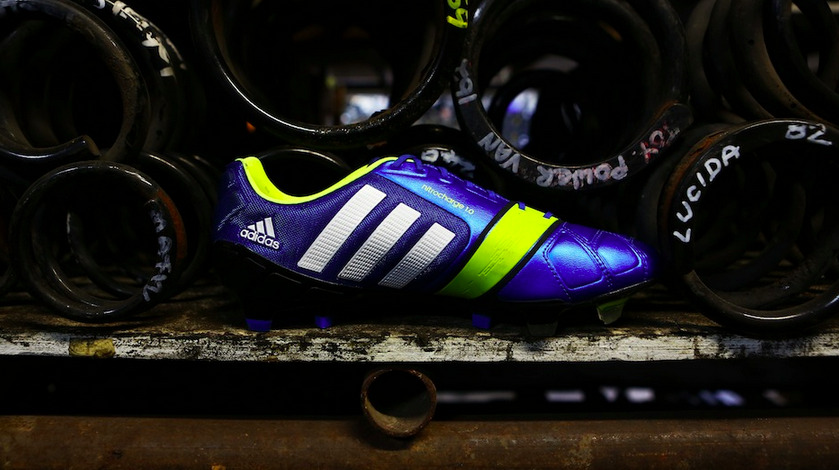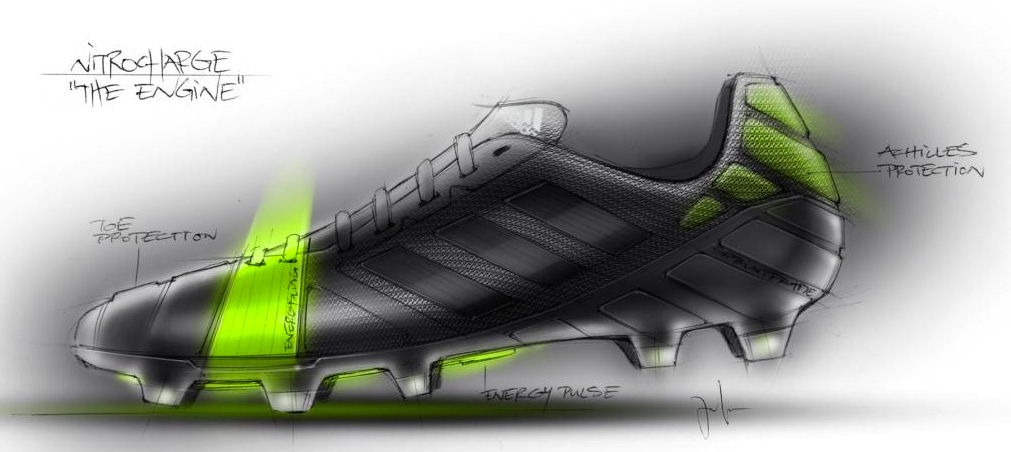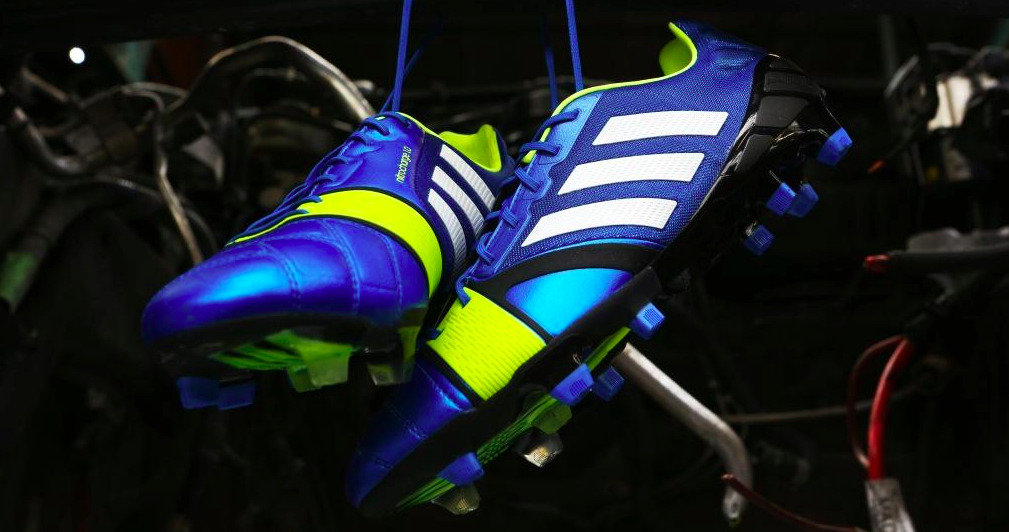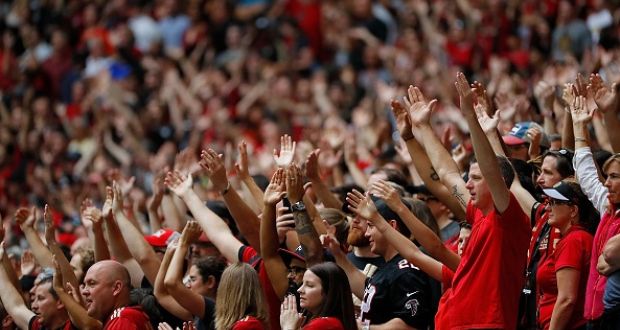The Science behind the adidas Nitrocharge
The Science behind the adidas Nitrocharge

The Science behind the adidas Nitrocharge
By Thomas Ang (@FootballNovel)
A new range of football boots called the Nitrocharge has been released by adidas, and its colours are already turning heads on pitches and television screens everywhere. But the bright yellow EnergySling (across the top of the shoe) and EnergyPulse (the zig-zig on the bottom) are there for more than just aesthetic purposes.
According to our secondary school physics and physical education lessons, these two key innovations should help match performance as advertised, and might even have benefits beyond.
Each time you plant your foot - while sprinting, stopping or turning - your foot comes to rest momentarily as you load your weight onto it. This means that in the collision between your foot and the ground, all the kinetic energy - the energy due to motion - in your foot is subtracted from until there’s none left. Amongst other destinations, some of it is dispersed into the ground (more if it’s softer), some into your muscles and elastic tendons, some into the cartilage in your joints (like your knees and ankles), and some into your boot.
Muscles are designed to absorb this kind of impact, and tendons are as well, if the force is applied in the correct direction. Cartilage can absorb some impact, but it doesn’t heal very well, so the more kinetic energy that is left for the cartilage to handle over the years, the more wear and tear damage your joints take.
In particular, the cartilage in your knees and ankles take a heavy load from sudden starts, stops and turns, because the body is less economical for these motions, than for running at a constant pace in a straight line. Hence why the most physically demanding parts of football are the sharp changes of pace and direction.
Now let’s talk about boots. Last month, after about 150 sessions spanning almost a year and a half, huge cracks started forming in the bottom of my adiZero f50s. This was because those hard plastic outsoles couldn’t deform much, especially not when faced with sideways momentum. Each step would hammer away at the outsoles, wearing through their structural integrity until visible cracks formed, as the kinetic energy from each impact was spent breaking bonds between plastic molecules.
This is where the EnergySling (activated by planting for lateral, side-to-side motion) and EnergyPulse (activated by planting for forward or upward motion) come in. Like your tendons, both are made from elastic materials - think of a rubber band or a spring - that deforms and then regains their shape.
When you load a spring or stretch a rubber band you’re converting kinetic energy into a type of potential energy called elastic potential energy. As opposed to, say, gravitational potential energy that is used by a swing set, that gets released as kinetic energy, again, when the elastic material moves to regain its shape.
In theory, when you plant your foot, the Nitrocharge boot stores some of your unwanted kinetic energy as potential energy in these elastic components. And when you push off the ground the potential energy is converted back into useful kinetic energy. This is where the advertised performance benefits would come from: you don’t spend as much effort fighting your own momentum, and instead store some of it as potential energy in the boot, which comes back to help you later.
As a result, you should get a bit more explosiveness out of each step, and you should waste less energy over the course of ninety minutes.
Does this actually work? I don’t have the means to run tests to validate adidas’s claims myself, but I wouldn’t be surprised if they were true, as these are not revolutionary, mind-blowing ideas. We see a similar use of elastic materials to accumulate explosive power in the trampoline, and we see the efficient idea of storing energy instead of fighting it in the regenerative braking technology used in electric cars.
In general, there have been many well-documented success stories for sport performance technology, including the innovative track design, to which many record-breaking performances at the London Olympics have been attributed.
In fact, the Nitrocharge may have even more benefits than what’s been advertised. The same theory we’ve been discussing suggests that these boots may last longer, as the types of cracks that formed in my f50s should be harder to come by if the outsoles have more elasticity in them.
Also, the cartilage in the knees and ankles should be the subject of less stress if the EnergyPulse and EnergySling allow the boot to join in on sharing more of the load, so the Nitrocharge might even extend playing careers. These hypothetical benefits are harder to validate though, in part due to differences in how each player moves, and perhaps that’s why adidas hasn’t made claims about them.
I put forward these hypotheses to a former teammate and Kinesiology major, Kamal Hamoud. On top of helping me to correct some of the technical details I’ve presented, he added further speculation, saying that the Nitrocharge could help reduce the stress on joints indirectly too, by reducing muscle fatigue, thus allowing muscles to continue bearing more of the load through the course of the ninety minutes.
This article is by Thomas Ang, who primarily writes football fiction. You can follow him on twitter @FootballNovel and on his Tumblr Roar of the Faithful. Comments below please.










